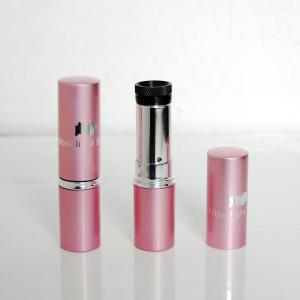Details
|
Product Name |
Specimen |
Format |
Catalog No. |
Cut-off(ng/ml) |
Strip width |
|
(FOB)Fecal Occult Biood Test |
Feces |
Cassette |
FOB-F02B |
100 |
3.0mm |
|
Cassette |
FOB-F02D |
100 |
4.0mm |
The FOB Rapid Test Device (Feces) is a rapid visual immunoassay for the qualitative, presumptive detection of human hemoglobin in human fecal specimens. This kit is intended for use as an aid in the diagnosis of lower gastrointestinal (g.i.) pathologies.
INSTRUCTION
Colorectal cancer is one of the most commonly diagnosed cancers and a leading cause of cancer-related death in the United States. Screening for colorectal cancer is likely to improve the odds of detecting cancer at an early stage, reducing mortality.
Earlier commercially available FOB tests utilized a guaiac test, requiring special dietary restrictions to minimize false positive and false negative results. The FOB Rapid Test Device (Feces) is designed especially to detect human hemoglobin in fecal samples using immunochemical methods, improving specificity for the detection of lower gastrointestinal disorders, including colorectal cancers and adenomas, without the need for dietary restrictions.
PRINCIPLE
The FOB Rapid Test Device (Feces) detects human hemoglobin through visual interpretation of color development on the internal strip. Anti-human hemoglobin antibodies are immobilized on the test region of the membrane. During testing, the specimen reacts with anti-human hemoglobin antibodies conjugated to colored particles and precoated onto the sample pad of the test. The mixture then migrates through the membrane by capillary action and interacts with reagents on the membrane. If there is sufficient human hemoglobin in the specimen, a colored band will form at the test region of the membrane. The presence of this colored band indicates a positive result, while its absence indicates a negative result. The appearance of a colored band at the control region serves as a procedural control, indicating that the proper volume of specimen has been added and membrane wicking has occurred.
SPECIMEN COLLECTION AND STORAGE
- •The FOB Rapid Test Device (Feces) is intended for use with human fecal specimens only.
- • Patients should not collect samples during or within 3 days of their menstrual period if they have bleeding hemorrhoids, blood in the urine, or if they experienced strain during their bowel movement.
- • Alcohol, aspirin and other medications taken in excess may cause gastrointestinal irritation resulting in occult bleeding. Such substances should be discontinued at least 48 hours prior to testing.
- • No dietary restrictions are necessary before testing.
- • Perform testing immediately after specimen collection. Do not leave specimens at room temperature for prolonged periods. Specimens may be stored at 2-8°C for up to 72 hours.
- • Bring specimens to room temperature prior to testing.
- • If specimens are to be shipped, pack them in compliance with all applicable regulations for transportation of etiological agents.
Bring tests, specimens, buffer and/or controls to room temperature (15-30°C) before use.
1. Specimen collection and pre-treatment:
- 1) Unscrew and remove the dilution tube applicator. Be careful not to spill or spatter solution from the tube. Collect specimens by inserting the applicator stick into at least 3 different sites of the feces.
- 2) Replace the applicator back into the tube and screw the cap tightly. Be careful not to break the tip of the dilution tube.
- 3) Shake the specimen collection tube vigorously to mix the specimen and extraction buffer. Specimens prepared in the specimen collection tube may be stored for 6 months at -20°C if not tested within 1 hour after preparation.
2. Testing
- 1) Remove the test from its sealed pouch, and place it on a clean, level surface. Label the test with patient or control identification. For best results, the assay should be performed within one hour.
-
2) Open the white cap of the dilution tube on the other side. Hold the tube vertically and dispense 3 drops of solution into the specimen well (S) of the test device.
Avoid trapping air bubbles in the specimen well (S), and do not add any solution to the result area.
As the test begins to work, color will migrate across the membrane.
3. Wait for the colored band(s) to appear. The result should be read at 5 minutes. Do not interpret the result after 10 minutes..
INTERPRETATION OF RESULTS
Negative: Only one colored band appears on the control (C) region. No apparent band on the test (T) region.
Positive: Two colored bands appear on the membrane. One band appears in the control region (C) and another band appears in the test region (T).
Invalid: If without colored band appears at control region, this is an indication of a possible error in performing the test. The test should be repeated using a new one.
STORAGE AND STABILITY
The test kits can be stored at room temperature (2 to 30 C) in the sealed pouch to the date of expiration. The test kits should be kept away from direct sunlight, moisture and heat.
PRECAUTION
1. For in vitro diagnostic use only.
2. Do not use test kit beyond the expiry date.
3. The test device should not be reused.



